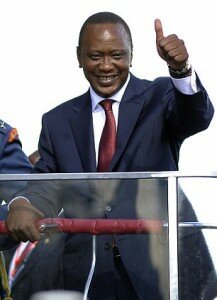Kenya develops plan for satellite region of Jubaland on Somali border
 It is the middle of the night in Eastleigh, a district of Nairobi mainly occupied by the Somali community. Jamal Sharif has not slept for 48 hours, steadily chewing miraa stems, which contain a mild amphetamine that dispels fatigue and makes people talkative.
It is the middle of the night in Eastleigh, a district of Nairobi mainly occupied by the Somali community. Jamal Sharif has not slept for 48 hours, steadily chewing miraa stems, which contain a mild amphetamine that dispels fatigue and makes people talkative.
Sharif is terrified the rest of Kenya might “attack and kill” Somali residents, and even those of Somali extraction. Operation Linda Nchi (Protect the Nation), which Kenya launched in mid-October, is already yielding poisonous fruit.
The army sent about 2,000 men across the border into Somalia to combat Islamist al-Shabaab insurgents who control much of the south. Al-Shabaab has promised to respond with attacks inside Kenya, endangering the Somali community, particularly in poor areas where lynching is commonplace. There have been a number of attacks.
There is more to operation Linda Nchi than just an incursion by a powerful neighbour. Until now Kenya has supported the Somali transitional federal government, which is backed by Ugandan and Burundian troops belonging to the African Mission in Somalia (Amison), and the US, without becoming directly involved.
Under rules set by the Intergovernmental Authority on Development, formed by Djibouti, Ethiopia, Kenya, Somalia, Sudan and Uganda, no other country is empowered to launch a military intervention in Somalia.
Several sources agree, however, that the Kenyan intervention plan was discussed and decided in 2010, then finalised with input from western partners, including the US and to a lesser extent France. Nairobi seems to have seized on kidnappings of foreign nationals by Somali groups on Kenyan territory as an excuse to launch an operation ready and waiting.
The final decision, taken precipitously, apparently surprised allies of Kenya, such as Ethiopia, which also has plans to intervene in Somalia. It is thought that both countries want to carve out zones of influence. Nairobi plans to set up a semi-autonomous region, Jubaland. A puppet government would be used to control resources and facilities, starting with Kismayo, a port used by smuggling networks with Kenyan links, according to a UN report published in July.
If the Kenyan army took control of Kismayo and established a satellite region in Jubaland, who would run it? The former Somali defence minister, a French-educated anthropologist, Mohamed Abdi Mohamed, seemed a good choice. In April he formed the Azania group, made up of Somali soldiers belonging to the Ogaden clan and trained by Nairobi at Isiolo in Kenya.
But plans for Azania have been cut down. Equipped by Nairobi with arms supplied by China, as revealed by WikiLeaks cables, Azania’s 3,000-strong force did not live up to expectations in the field. Ethiopia also objected to an Ogadeni principality being established on its doorstep: Addis Ababa is already combating a rebellion led by the Ogaden National Liberation Front, which finds recruits among this clan. So the task of governing Kismayo will be allotted to other influential clans, primarily the Marehan, and the most powerful armed groups in the region, in particular the Ras Kamboni militia, former Islamist combatants who have been “turned round” to fight al-Shabaab.
However, if Kenya does capture Kismayo, another solution is now being considered. Amisom forces from Mogadishu could be deployed there, at which juncture Kenyan troops could join the ranks of the African Union force. This would also pave the way for a major infrastructure project in the region. Lamu, Kenya’s traditional port, mainly used for luxury tourism until now, would be converted into an oil terminal, providing an outlet for the as yet unexploited oilfields of southern Sudan and northern Kenya. Radiating out from Lamu, a rail and road network would connect Ethiopia and Sudan to the Indian Ocean.
This scheme, which is still under study, would be supported by almost $10bn in Chinese investments. But it is obviously not compatible with a zone of insecurity maintained by al-Shabaab.
However, the advance by the Kenyan military is not going as well as hoped: it rained steadily for the first fortnight of the intervention and heavy vehicles were bogged down.
This article was originally published in Le Monde
Comments
comments
 Calendar
Calendar





































